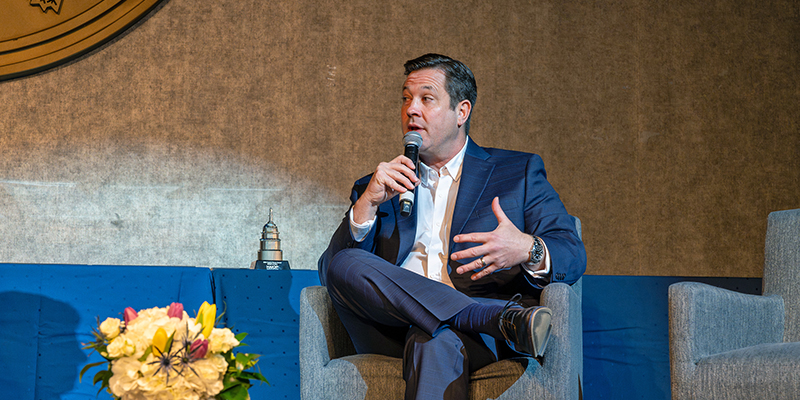This November, after what some have called the nastiest presidential race in modern memory is decided, the idea that our elected officials will put bitterness aside and find policy areas where compromise is achievable may seem laughable. However, one area that many feel could be a source of bipartisan cooperation is infrastructure spending. While Donald Trump and Hillary Clinton disagree on many things, each has made increasing investment in U.S. roads, bridges, ports and water systems an important element of their economic plans. The natural assumption, then, is that no matter who wins the presidency, our nation’s infrastructure deficit will finally be addressed. And yet, like many things this year in politics, taking this as a given would be a mistake. There remain significant challenges, on substantive policy grounds as well as political, that will work against any infrastructure legislation. The reality is that the next administration will need to spend much political capital and effort to get major infrastructure legislation enacted.
Clinton’s infrastructure plan would invest $275 billion over five years. She would devote $250 billion to direct public investment, with an additional $25 billion being allocated to an “infrastructure bank” that would leverage its funds to support direct loans, loan guarantees and other forms of credit estimated at an additional $225 billion. In total, Clinton’s touts her plans as $500 billion in added investment in our nation’s infrastructure. Trump has said Clinton’s plan is inadequate, and that his plan would be at least double the amount in the Clinton proposal, although specifics are lacking. Both have said they would pay for increased infrastructure spending through tax reform, most notably a reliance on repatriation of overseas corporate profits.
While the party that is likely to win control of the Senate remains a hotly debated topic, the current consensus of most political analysts is that the Republicans are likely to maintain their House majority. In that case, both the Trump and Clinton plans would face opposition from many House Republicans who will control the agenda in that chamber, and from many Senate Republicans, regardless of who controls that body.
The opposition is rooted in policy and political calculation:
- The notion that Republicans will fall in line because their presidential nominee supports a muscular infrastructure program ignores longstanding Republican efforts to redirect authority – and spending – away from the federal level to state and local governments. House Republicans opposed Obama administration initiatives to increase spending and expand the federal role in transportation, and doubts have been raised that Trump’s infrastructure spending proposals would be welcomed any more than Clinton’s. Trump’s own economic advisor, in fact, penned an opinion piece arguing against increased infrastructure spending.
- Much of the rationale for infrastructure spending has been its use as a fiscal stimulus, to generate jobs when there was slack in construction labor markets. In an improving economy, this argument is less compelling. In fact, increased infrastructure spending when construction employment is nearing its pre-recession peak could lead to labor shortages in construction markets, and increased labor costs and project delays.
- Funding has not been adequately identified. While both candidates talk about using revenues from various “tax reform” proposals, a rewrite of the tax code is a monumental task in its own right, and one-off closures of tax preferences are difficult to achieve and would not provide the revenues needed for either plan. Increasing the gas tax has been dismissed by both candidates.
- Thorny policy issues divide the parties. Republicans want to exempt federal infrastructure spending from Davis-Bacon prevailing wage requirements, a non-starter for Democrats and their union constituents. Democrats also view with suspicion Republican efforts to increase flexibility by relying on the use of “P3s” – public-private partnerships – a goal many NAIOP members support.
- Urgency for infrastructure legislation has lessened because of enactment of a $305 billion transportation reauthorization bill at the end of 2015. Consequently, Congress will not face deadlines which forced action to renew authorization for the Highway Trust Fund, reducing the administration’s negotiating leverage.
- If Democrats take over the Senate this year, they will very likely lose it in the 2018 midterm elections since they will be defending 25 seats to the Republicans’ eight seats. It is an unfortunate fact of life that politically, there will be very little incentive for Senate Republicans to help Democrats achieve a major policy victory for Hillary Clinton if she is president.
Increasing our nation’s investment in infrastructure will remain a top NAIOP priority, and an important policy objective for the commercial real estate industry after the election. However, despite its seemingly bipartisan nature, NAIOP members should be under no illusions that this is a policy goal certain or destined to happen, but rather something that we cannot take for granted.














